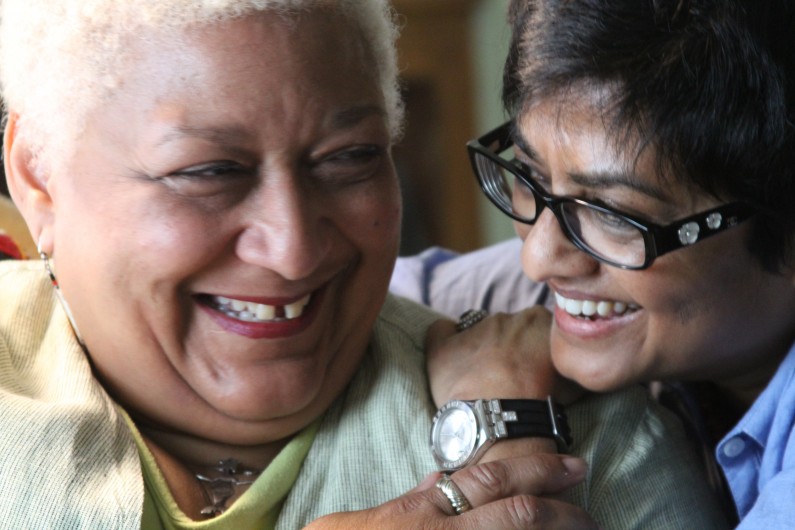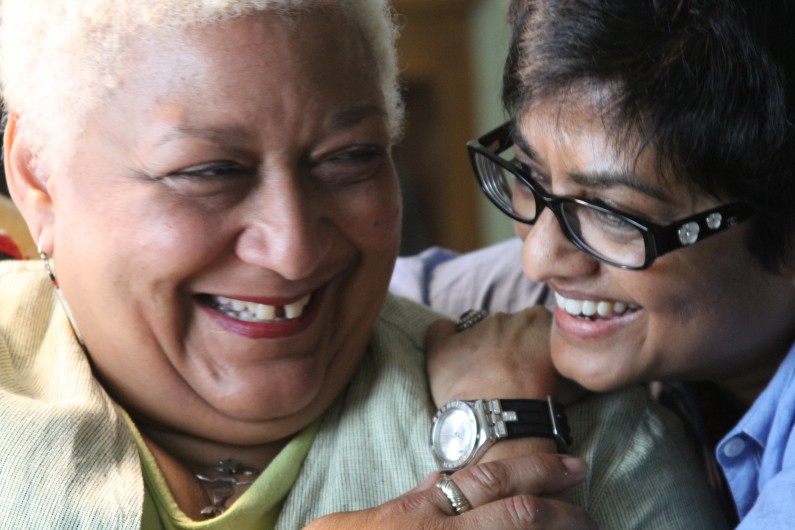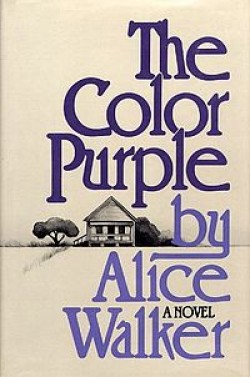Making this film has been an extraordinary journey so far. Giving me opportunities to meet some amazing and inspiring women, all of who deserve films in their own right. Jewelle Gomez is one such woman. I have known Jewelle for many years but rarely have had an opportunity to talk to her in depth. I recently caught up with her at her home in San Francisco.
First and Foremost. Jewelle has one of the sexiest voices I have ever encountered. When she speaks she does so with incredible poetical precision and erudite coherence. All I can do is stare and listen in awe. I was keen to interview Jewelle as I have always admired and respected her consistent support for women of color artists as well as a commitment to her own unique artistic vision. Jewelle’s pioneering book The Gilda Stories (1991) broke less trodden ground when for the first time a woman of color ventured into a fictional foray about vampires. Taking a lesbian feminist perspective, the book is an adventure about an escaped slave who comes of age over two hundred years. Jewelle rightly won a double Lambda Literary Award for this pioneering novel.
The Love That Dare Not Speak Its Name
The publication of Alice Walker’s novel The Color Purple in 1982 was an important cultural, literary moment. It inspired confidence and hope amongst many women and especially lesbians of color. The singular potency of the tender love between Celie and Shug, the two female lead characters in the novel, made visible Black lesbian relationships in the most beautiful of ways. A rare Sapphic tribute.
Did Jewelle remember how she felt when she first read The Color Purple? What was it about the book that struck her most? “The Color Purple for me took both the spiritual core of black womanhood and the agonizing reality of black womanhood and brought them together in a place that would allow for hopefulness that I hadn’t ever really seen before, certainly not on the page.”
Countless vitriolic attacks on Alice Walker personally as well as the book, escalated ten fold when the subsequent movie of The Color Purple by Steven Spielberg was released. Tony Brown, television host of the program Tony Brown’s Journal on PBS called the film “the most racist depiction of Black men since Birth of A Nation and the most anti-Black family film of the modern film era.” As most of you know ‘Birth Of A Nation’, (1915,) is widely seen as ‘both one of the landmarks in the history of American cinema and a landmark in American racism.’
Prime Time Television shows were devoted to discussing the merits or otherwise of Alice Walker’s book and Steven Spielberg’s movie. Both works of art were seen as a threat to black masculinity because of the perceived ‘stereotyped, clichéd’ images and the stark exposure of incest and domestic violence within Black families. Ishmael Reed, a Black novelist labeled the book and film “a Nazi conspiracy” and ‘accused’ Alice Walker of having a feminist and lesbian agenda. And that this alone should be reason enough to dismiss this Pulitzer Prize winning book.
Jewelle continues, “It’s always interesting to me, any time there’s a discussion on the topic of independent women, lesbianism is an undercurrent in the critique of the work. And one of the brilliant things in The Color Purple is that it’s right out there. She (Alice Walker) has Shug Avery, clearly a bisexual character, whose love for Celie is able to help Celie save herself from her circumstances, and until then there wasn’t really a major novel, which included the romantic and sexual love between two women as part of the natural order of things. That was a huge thing, and I know that some people had issues with it, but some people always will.”
Many Black male critics gave vent to their hostile views wherever they could find a platform. Black women on the whole loved the film and felt that the book told “their story’ and the movie ‘lifted a burden.’ Alice Walker received personal letters from women and men all over the world that testified to the book’s gift of reaching deep into the hearts of so many people open enough to receive it.
The Color Purple was published in the context of the late 1970’s and early 80’s burgeoning movement of women of color poets, activists and writers. Jewelle was living in New York during this exhilarating time, and as we spoke I sensed her excitement at being part of this pivotal moment in queer women of color activism and creativity.
“Our work as African American women really, really, blossomed. There was a magazine at the time in New York called Jemima. It was part of a collective and they did readings all around the city. It was an African American lesbian group, and they published magazines. It was just very rich and it felt very much like what I imagined being part of the Black Arts Movement in the 60s would have been like – this sense of being really connected to progressive political politics and expression that was going to make life different, that was going to make the world change.”
It takes determination, imagination and passion to retain artistic integrity. Jewelle Gomez has done that ten fold, and as such, she continues to make a difference for all of us – through her daring and her art. She remains allied to progressive politics and makes the necessary connections between art and change, art and social justice. I am thrilled that Jewelle is part of our film, Beauty In Truth, because she is one rare gem in the treasure trove of women of color writers.



